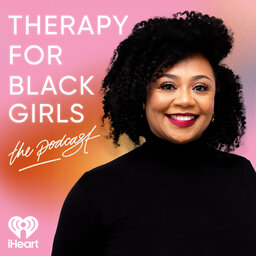TBG Library: DANCES by Nicole Cuffy
The Therapy for Black Girls Podcast is a weekly conversation with Dr. Joy Harden Bradford, a licensed Psychologist in Atlanta, Georgia, about all things mental health, personal development, and all the small decisions we can make to become the best possible versions of ourselves.
We’re back with another page-turning addition to your bookshelf. Grab your reading glasses, find somewhere cozy, and get into this week’s TBG library pick, DANCES by Nicole Cuffy. DANCES follows CeCe Cordell, a 22-year-old ballet dancer who is catapulted into celebrity when she is promoted to principal at the New York City Ballet. Even as she celebrates the achievement of a lifelong dream, she is haunted by the feeling that she doesn’t belong, and has to work to unravel the loose threads of a complicated family past.
For this episode, Nicole joins us to dive into the ways in which she weaved parts of her own life into the book, the double consciousness experienced by Black writers impacted by the white gaze, and how the book tackles broader themes through the lens of ballet.
Resources & Announcements
Visit our Amazon Store for all the books mentioned on the podcast.
Grab your copy of Sisterhood Heals.
Where to Find Nicole
Stay Connected
Is there a topic you'd like covered on the podcast? Submit it at therapyforblackgirls.com/mailbox.
If you're looking for a therapist in your area, check out the directory at https://www.therapyforblackgirls.com/directory.
Take the info from the podcast to the next level by joining us in the Therapy for Black Girls Sister Circle community.therapyforblackgirls.com
Grab your copy of our guided affirmation and other TBG Merch at therapyforblackgirls.com/shop.
The hashtag for the podcast is #TBGinSession.
Make sure to follow us on social media:
Twitter: @therapy4bgirls
Instagram: @therapyforblackgirls
Facebook: @therapyforblackgirls
Our Production Team
Executive Producers: Dennison Bradford & Maya Cole Howard
Producers: Fredia Lucas, Ellice Ellis & Cindy Okereke
Production Intern: Zariah Taylor
 Therapy for Black Girls
Therapy for Black Girls


